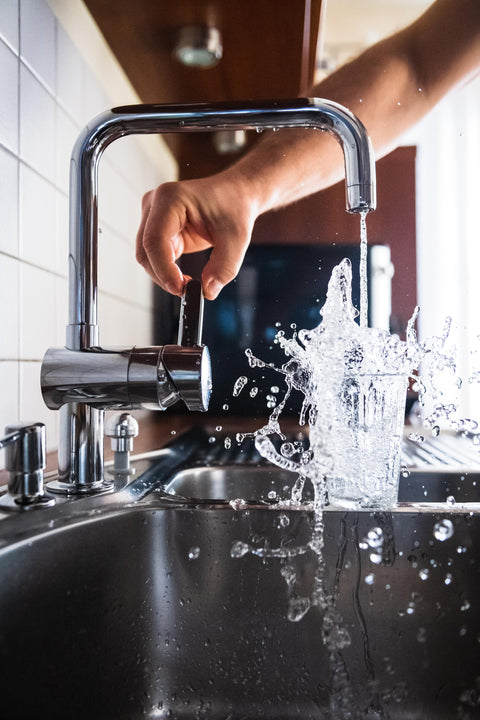Bottled water vs. Ecological Alternatives for Drinking Quality Water in France 🌍💧
In 2021, a shocking statistic came to light: 83% of French people continue to consume bottled water, totaling more than 9 billion liters of water per year in France alone. This places France fifth in the world in terms of consumption of plastic water bottles. 🇫🇷🌊
The Consequences of Plastic on the Environment 🚯
However, we are all aware of the disastrous consequences of plastic on the environment. Most plastic bottles are rarely recycled and often end up in nature or the oceans. Worse still, micro-plastics break off from these bottles and end up in our stomachs. It is even reported that we ingest the equivalent of a plastic credit card every week, or around 5 grams! 🚫🌿
Recently, I had the opportunity to travel to the Canary Islands in Spain, where I noticed that the deposit system for glass containers was still in place and working very well, even with individuals. Unfortunately, this sustainable approach is not yet very widespread in France. 🏝️🌿
Drinking Tap Water: An Ecological Alternative 🚰
However, there are simple ecological and economical alternatives to avoid this widespread pollution: drinking tap water. 💧
The Tap Water Taste Challenge 🤢
It is true that the taste and quality of tap water in France are not always pleasant. Although this helps avoid the issue of plastic and waste, the taste of chlorine can sometimes be prohibitive. 🚰👅
The State of Water in France 🇫🇷
The UFC, a consumer association, recalls that nearly 96% of consumers can drink their water with complete confidence, but unfortunately, 2.8 million people have access to polluted water, notably by pesticides, nitrates or lead. 📊🚫
Solutions for Better Quality Water 🌱
So, what are the ecological alternatives to easily purify your tap water at a lower cost? 💡
“EM” Ceramic Beads 🍶
Rather than filtering water in the traditional way, it is possible to improve its quality using a Japanese process. Clay balls are heated to extremely high temperatures, up to 1000°C, to create ceramic beads enriched with effective micro-organisms, called "EM". 🇯🇵🔬
The Power of Microorganisms 🦠
The action of these micro-organisms significantly softens the water, eliminates the unpleasant taste of chlorine and prevents the accumulation of limescale. Simply add a few pearls to a carafe, around ten per liter of water, to obtain water that is softer and pleasant to drink. 🌊🍶
Pink Pearls vs. Gray Beads 🌸🪙
Two types of pearls exist: pink pearls, recommended for purifying water intended for direct consumption, and gray pearls, more effective against limescale and suitable for household appliances. Pink pearls are porous and absorb heavy metals and chemicals from drinking water, but their lifespan is only 6-8 months. In contrast, gray pearls are extremely durable, with a lifespan of 10 years. 🌸🪙
“Binchotan” Activated Carbon 🌿🌑
Another solution for filtering tap water is to use activated carbon, such as Binchotan, by immersing it in a jug of water. This activated carbon comes from the combustion of wood and its patented transformation makes it possible to filter tap water by eliminating chlorine and softening the pH of the water. 🍃🌑
A Sustainable Alternative 🔄
Much like ceramic beads, the porosity of activated carbon allows chemicals and heavy metals to be captured through absorption. Simply leave the charcoal to act in the carafe for 4 to 8 hours. In addition, this charcoal releases minerals and trace elements beneficial to our body. Once it is no longer effective (approximately every 6 months), it can be composted or reused in different ways. 🔄🌿
Solutions to Adopt 🌱
Although the effectiveness of these products can sometimes be debated due to a lack of indisputable scientific evidence, many people, myself included, have seen significant improvements using these solutions for quality tap water, even in regions where the water is very hard and has an unpleasant taste. This approach also helps reduce the consumption of plastic water bottles. 🙌🌊
Adopting a Reusable Bottle 🥤🌿
To further encourage this ecological approach, equip yourself with a glass or stainless steel bottle that you can fill with filtered water and take with you everywhere. 💧🌍
If you liked this article, do not hesitate to subscribe to my newsletter to receive more advice and discoveries aimed at reducing your daily environmental impact. Together, we can do better for the planet by opting for simple and environmentally friendly alternatives. 🌱


